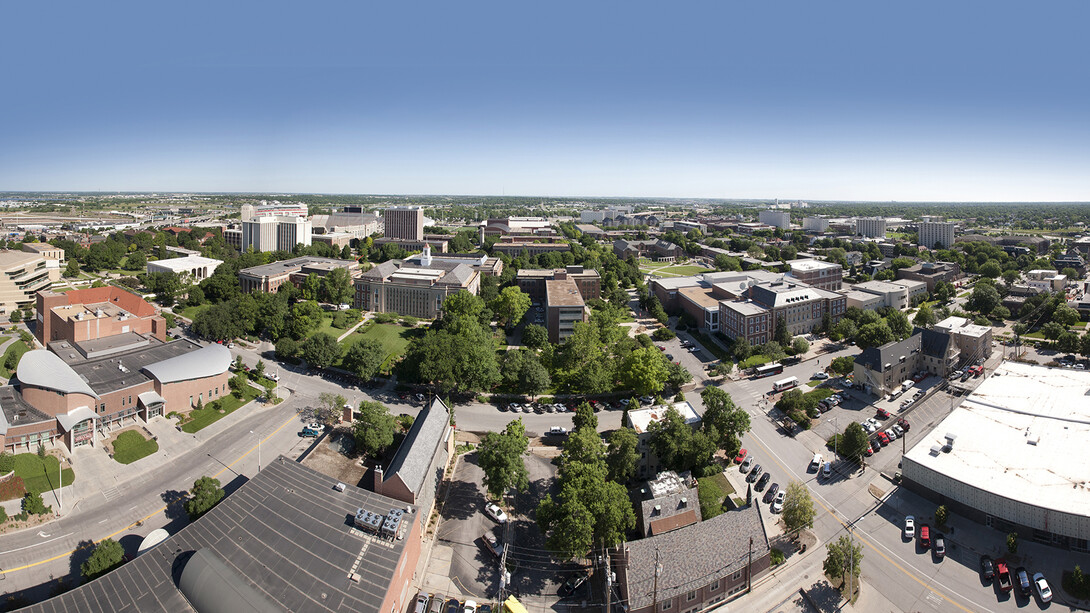
Break out the balloons. Strike up the band. Hang those new B1G banners. The University of Nebraska–Lincoln is becoming an official member of the Big Ten Conference.
After a 394 day wait, the transition completes July 1. UNL officials from academics and athletics have spent the last year meeting with Big Ten counterparts to prepare. Members of the Big Ten and its Committee on Institutional Cooperation have come to Lincoln to become familiar with UNL’s people and programs. And, by all accounts, the transition has gone incredibly smoothly.
“We have worked for the last year to set the stage for UNL’s entry into the Big Ten and the CIC,” said Barbara McFadden Allen, director of the CIC. “At no time has any part of this transition felt forced, strained or stretched because UNL is a natural fit for the Big Ten.”
UNL is indeed similar to other Big Ten universities. It is a land-grant institution like seven others in the conference and UNL is a major research university. Nebraska is contiguous to states in the Big Ten Conference. UNL has a high percentage (around 30 percent) of faculty who have degrees from CIC universities. And UNL faculty and administrators have shown an intense desire for collaboration — both across disciplines among campus units and with other institutions around the world.
“This is going to be a partnership that will thrive for many, many years,” said Allen.
However, UNL still has some work to do to measure up academically to Big Ten counterparts. In figures used to gauge universities’ financial, academic and research strength, UNL ranks at or near the bottom among the Big Ten institutions.
“The Big Ten is much more than a new group of teams with which we will compete,” said Chancellor Harvey Perlman. “This new relationship is an enormous leap forward for UNL academics. The Big Ten is a historically prestigious and stable academic community of scholars and students, highly regarded in academic circles.”
Among those strength gauges, UNL does rank high in growth in both enrollment and research funding. In the last five years, enrollment has grown 13.5 percent at UNL — a figure that ranks near the top among Big Ten institutions. And, from 1999 to 2008, research funding at UNL has increased by 121 percent. That figure is second only to Ohio State University.
While UNL administrators, faculty and staff are ready to work on strengthening campus academic programs, the university does boast programs that are attractive to Big Ten and CIC institutions.
Those unique programs include (but are not limited to) the digital humanities project, the Global Water Institute, climate study, life sciences initiative and the water center.
While working with Big Ten peers, UNL faculty have been named to a variety of CIC committees and initiatives. UNL representatives have also participated in a pair of collaborative research projects offered through the CIC. Those projects include work to address traumatic brain injuries and international competitiveness.
“Both faculty and athletic staff at UNL have been working with the CIC and the Big Ten to address traumatic brain injuries,” Allen said. “I definitely see a leadership role for UNL in that initiative.”
Faculty from a variety of disciplines from across the CIC recently participated in the first conference on international competitiveness. Allen said the Center for Advanced Study in International Competitiveness will present a variety of opportunities for UNL faculty. The center — which is the CIC’s first large scale collaborative research effort across the consortium — will provide research leadership in the study of complex international competitiveness issues that have scholarly and practical significance, particularly those with public-policy implications.
Access to materials through the UNL Libraries will also increase with CIC membership. Books in the library will be added to the CIC’s digital book project. The project offers more than 85 million books and volumes to CIC member institutions. The program eclipses a similar Ivy League initiative, which offers around 60 million books.
And, UNL technology is also already working to support the CIC. Through an agreement signed earlier this year, UNL is providing network redundancy in case CIC internet access is disrupted. One of the first programs UNL students will encounter is the CIC’s course-sharing program. As the name implies, the program allows for unique courses (in particular areas of foreign language study) to be offered across CIC institutions.
“The earliest UNL students would be able to enroll in courses offered by other CIC universities will be for the spring semester,” said Allen. “We are working through the registration and access process now. All of that will come and there will be some extraordinary opportunities for UNL students.”
UNL-based classes are also expected to be course shares in the future.
The CIC also offers a variety of study abroad opportunities for students.
Through all the discussions, meetings, phone calls and email over the last year, Allen said she was most impressed by UNL’s desire to collaborate.
“The interesting thing we noticed when we visited UNL was that people there want to and know how to collaborate,” said Allen. “I cannot underestimate the importance of that.”
She said that spirit of collaboration mirrors the feeling between members of the Big Ten Conference and the CIC.
“The Big Ten Conference is the oldest athletic conference in the nation,” said Allen. “There is a long standing, stable partnership on the athletic side. But, the presidents recognized that they are truly peer institutions with much more in common than other conferences.”
She said Big Ten officials have stuck by the idea that member institutions should be powerhouses in both athletics and academics.
“That sustained level of commitment is what has enabled Big Ten institutions to collaborate in ways that are not possible in any other conference,” said Allen. “We found that same spirit when we visited Lincoln. It’s also why UNL is such a natural fit for the Big Ten and the CIC.”







